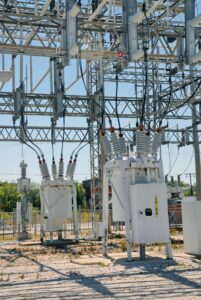What’s old is new again. Back in the “olden days,” polychlorinated biphenyls or PCBs seemed to dominate the environmental landscape. We were testing drums of waste oil, effluent, sediments, and more for PCBs.
What are PCBs?
PCBs were manufactured in the United States from the late 1920s to 1979 when its manufacturing was banned.
Based on their non-flammability, chemical stability, and high boiling point, PCBs were commonly used in transformers and capacitors. PCBs had hundreds of other industrial and commercial applications.
Environmental Contaminant
Excerpted from a series of articles on PCBs in Science Direct, below is some basic refresher information on PCBs:
“Polychlorinated biphenyls (PCBs) are one of the most widely studied environmental contaminants, and many studies in animals and human populations have been performed to assess the potential carcinogenicity of PCBs. PCBs are mixtures of up to 209 individual chlorinated compounds (known as congeners or chlorinated hydrocarbons)…”
“Once in the environment, PCBs are persistent and tend to accumulate in the organic fraction of the environmental media in which they are found. Although PCBs can be found in air, water, and soil, they readily accumulate in sediment and tissue, and are most often found at the highest concentrations in aquatic food webs. Consequently, the primary route of human exposure for PCBs in the environment is fish consumption, followed by agricultural products such as dairy and beef and, to a lesser extent, various vegetable crops.”

Based on their non-flammability, chemical stability, and high boiling point, PCBs were commonly used in transformers and capacitors (Photo by Robert Linder on Unsplash).
PCBs Are Not Without Controversy
Though PCBs are no longer used in the United States, there has been controversy with respect to their toxicity.
A 2007 document from The Agency for Toxic and Disease Registry states, “The potential adverse human health effects of low-level environmental exposure to PCBs are complex and still need further validation [Safe SH 2007].”
In a 2017 paper (PCBs are not “Toxic Time Bombs”) from McGill University, Dr. Joe Schwarcz writes, “…the chance that anyone would suffer any adverse effect that could be linked to the stored PCBs I believe borders on zero. But the effects of the stress caused by the unrealistic portrayal of a ‘toxic time bomb’ may not be zero.” Dr. Schwarcz is speaking specifically about an incident of illegally stored PCB-filled transformers and contaminated waste in Pointe Claire, Quebec. The article should be read in its entirety for context.
The American Council on Science and Health has also been outspoken on the topic of PCBs.
PCB Litigation
Nevertheless, PCBs are banned in the United States and are strictly regulated under several environmental regulations including the Toxic Substance Control Act, The Clean Water Act, The Resource Conservation and Recovery Act, and the Clean Air Act.
PCB contamination can and does result in environmental liability and as outlined below, litigation. In the cases below, Bayer bought Monsanto in 2018 and appears to be focused on settling the legacy PCB cases.
$550 Million Settlement
According to a recent article in National Law Review, “A Central District of California Judge has preliminarily approved a class action settlement in City of Long Beach, et al. v. Monsanto Company, et. al. that will resolve claims by various municipalities against Monsanto Company, Solutia, Inc. and Pharmacia for environmental damages related to PCBs. The underlying basis for the claims are allegations that PCBs are present at sites and public properties, including in stormwater, storm and wastewater systems, water bodies, sediment, natural resources, fish and wildlife. The Defendants agreed to pay $550 million to be distributed to 2,528 initial class members across the United States.”
This case while heard in California will result in 135 Wisconsin municipalities (identified as class members) being eligible for a combined total of $11 million from the fund. The intended use of the money is for “restitution and remediation including mitigation of contaminated property, stormwater, and/or stormwater systems, including compliance with a TMDL.”
Finally, according to the article, in exchange for accepting payments as class members, the municipalities will be forever barred from making any claim against these manufacturers for PCB-related environmental impairments, including impairments to water bodies, sediment cleanups, public properties, including stormwater and wastewater systems.
$80 Million Settlement
The Ohio State Attorney General’s office stated in a press release on March 24, 2022, “Ohio Attorney General Dave Yost today announced an $80 million settlement with the Monsanto Co. that forces the company to pay for the long-standing environmental damage it knowingly caused in Ohio with its toxic products.”
The press release went on to say that “Ohio has been absorbing the health and environmental costs of PCB contamination for decades, and the cleanup will likely continue for even longer. This settlement not only holds Monsanto accountable for its actions but also provides significant financial resources to assist in environmental cleanup.”
An article in Reuters on March 24, 2022, states, “Two separate juries last year awarded a combined $247 million in damages stemming from exposure in a school in Washington state (sic). Bayer said the evidence showed the plaintiffs were not exposed to unsafe levels of PCBs and the company said it planned to appeal both verdicts.”
Expert Environmental Help
If you need technical assistance on a project that involves assessment, remediation, or litigation support on a project involving PCBs or other contaminants, we can help. We have nearly 35 years of experience in helping our clients find technically sound and defensible solutions. To start a conversation with Dragun Corporation, contact Jeffrey Bolin, M.S., CHMM at 248-932-0228, Ext 125.
Follow Dragun Corporation on LinkedIn.
Sign up for our free monthly Environmental Newsletters.
Principled Foundation | Thoughtful Advice | Smart Solutions
